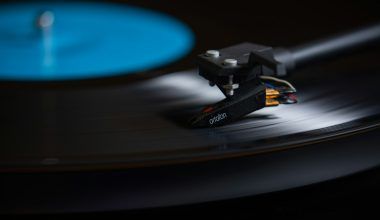The music industry has changed dramatically over the last decade, and one of the biggest shifts is how easy it has become for independent artists to share their music with the world. Gone are the days when you needed a record label to distribute your album to major platforms. Today, you can share your album on all digital stores without a label and still reach millions of listeners.
This guide is here to walk you through everything you need to know about getting your album onto digital stores like Spotify, Apple Music, Amazon Music, and many more—without the backing of a label. Whether you’re a first-time artist or someone looking to take control of your music career, this step-by-step approach will simplify the process.
Sharing your album on digital stores allows you to:
- Reach a Global Audience: Digital platforms are accessible worldwide, which means your music can be heard by people in different countries and cultures.
- Earn Revenue: Through streaming royalties and digital sales, you can monetize your music and generate income.
- Maintain Creative Control: Without a label, you have full control over your music, branding, and distribution strategy.
- Build Your Brand: A presence on digital platforms legitimizes your career as an artist and makes it easier to connect with fans.
- Track Your Performance: Most platforms offer analytics tools that allow you to see how your music is performing.
Step 1: Prepare Your Album for Distribution
Before you can share your album on all digital stores without a label, you need to ensure it’s ready for distribution. This includes:
High-Quality Recordings
Make sure your tracks are professionally recorded and mastered. The quality of your music will leave a lasting impression on listeners.
Metadata
Metadata includes information like track titles, artist name, album name, genre, and release date. It’s crucial to get this right because it’s how your music will appear on digital stores.
Album Artwork
Your album cover is the first thing listeners see, so invest time in creating an eye-catching design. Ensure it meets the specifications required by digital platforms (usually a minimum of 3000×3000 pixels).
Decide on a Release Date
Pick a release date that gives you enough time to plan and promote your album. Many artists choose Fridays for new releases.
Step 2: Choose a Digital Distribution Service
Digital distribution services act as the middleman between you and digital stores. They help you upload your music to multiple platforms. Here are some popular options:
- DistroKid: Known for its simplicity and affordability.
- Deliver My Tune: Offers a wide range of services, including publishing.
- CD Baby: Perfect for artists who want both distribution and physical CDs.
- AWAL: Ideal for artists who want additional marketing support.
When choosing a distributor, compare factors like pricing, platform coverage, payout rates, and additional features. Make sure they distribute to all major digital stores, as well as niche platforms.
Step 3: Register for Royalties
To ensure you get paid for your streams and sales, register with a performing rights organization (PRO) like ASCAP or BMI. Additionally, consider signing up with a mechanical licensing service to cover royalties for international plays.
Step 4: Upload Your Music
Once you’ve chosen a distributor, follow their instructions to upload your music. During this process:
- Upload your high-quality audio files.
- Add metadata, including genre and mood tags.
- Double-check your album artwork.
- Set your release date.
Step 5: Promote Your Album
Sharing your album on all digital stores without a label is only the beginning. To reach listeners, you need a strong promotional strategy. Here are some tips:
Use platforms like Instagram, Twitter, and TikTok to create buzz around your album. Share snippets of your songs, behind-the-scenes videos, and engaging visuals.
Pre-Save Campaigns
Encourage fans to pre-save your album on platforms like Spotify. Pre-saves ensure your music appears in their library the moment it’s released.
Email Marketing
Build a mailing list and send updates about your album release, exclusive content, and upcoming events.
Collaborations
Work with other artists or influencers to expand your reach. Collaborative projects often attract a wider audience.
Live Streams
Host a live stream to celebrate your album release. Perform a few songs, answer fan questions, and share your journey.
Step 6: Monitor Your Performance
Once your album is live, keep track of how it’s doing. Most digital stores provide analytics that show:
- Number of streams
- Geographic location of your listeners
- Popular tracks from your album
- Audience demographics
Use this data to refine your promotional strategies and plan future releases.
Benefits of Going Label-Free
Releasing music without a label has its challenges, but the benefits often outweigh them. As an independent artist, you:
- Keep a Larger Share of Profits: Labels typically take a significant cut of your earnings.
- Control Your Career: You decide how to release and promote your music.
- Experiment Freely: Without label constraints, you can explore different genres and styles.
Final Thoughts
Sharing your album on all digital stores without a label is not just possible—it’s empowering. With the right tools and strategies, you can connect with a global audience, build a loyal fanbase, and turn your passion for music into a sustainable career. Start today and take control of your music journey.
For further reading, explore these related articles:
- Monetize Your Single on All Streaming Platforms and Earn Money
- Monetize Your Single on All Streaming Platforms as an Independent Artist
- How to Monetize Your Single on All Streaming Platforms Without a Label
For additional resources on music marketing and distribution, visit DMT RECORDS PRIVATE LIMITED.






